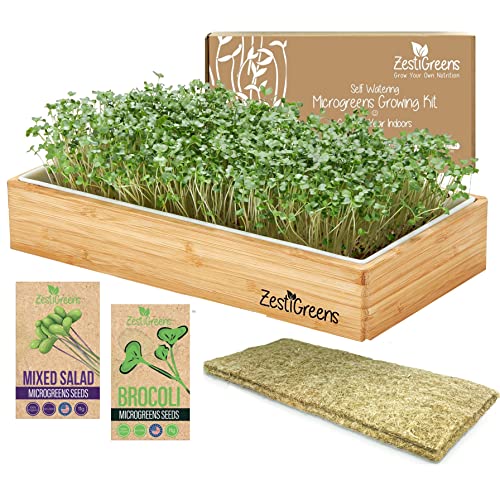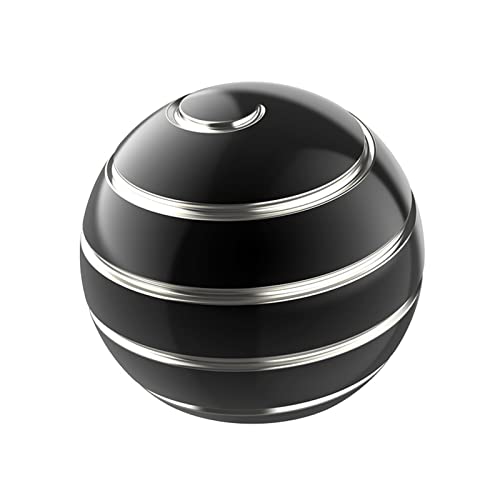Why Nail Trimming Matters for Your Furry Friend
Trimming your dog’s nails isn’t just about looking fabulous—it’s a vital part of their overall health. Long nails can lead to discomfort, affect their walk, and even cause joint issues. But fear not, new dog groomer! With a little patience and maybe a dash of humor, you can make nail trimming a hassle-free routine right at home. Forget the stress and unwanted drama, this task is all about building trust and strengthening your bond with your furry companion.
Before you grab those clippers and treat yourself to a high-five, let’s make sure you’re fully equipped for the mission. We’ll delve into gathering the right tools and creating a calm setting that both of you will enjoy. No need to dread mishaps—troubleshooting will have you handling any bobbles with a smile. With post-trim pampering and the right maintenance schedule, those nails will stay in tip-top shape. Let’s dive into the art of the clip!




Master the Art of Safely Clipping Your Dog’s Nails at Home
Gathering the Right Tools: Your Nail Trimming Arsenal
Before you embark on this nail-biting adventure, ensuring you have the correct equipment is essential for success. Think of it as assembling a superhero toolkit for trimming your dog’s nails, where every item plays its part in averting nail-trimming disasters and ensuring happy tails.
Clippers that Clip
When choosing nail clippers, comfort for both you and your pup is key. Go for a pair that features a non-slip grip and is specifically designed for dogs. The market abounds with options, but a popular choice is the gonicc Pet Nail Clippers with Safety Guard, beloved for its ergonomic design and built-in safety guard to prevent over-trimming.
The Power of the Styptic Powder
Accidents happen, but there’s no need to panic when you have styptic powder on hand. This magic dust quickly stops any bleeding should you accidentally clip too far. It’s your first line of defense against nail-trimming mishaps and keeps your pooch’s paws in perfect condition.
Treats: The Ultimate Bribe
Indulge your four-legged friend with some of their favorite treats to help distract and reward them. Keep a stash close by, rewarding your pup throughout the process. Positive reinforcement turns this day of potential dread into a simple treat hunt.
Lighting That Shines
Good lighting is vital to nail-trimming precision. Consider a headlamp or a small lamp to illuminate those tiny nails, ensuring each snip is perfect. This enhances visibility, making your job less tricky and more enjoyable.
With these trusty tools at your disposal, you’ve laid the foundation for a smooth clipping session. Next up, we’ll create the perfect setting—because even superheroes need a quiet environment to save the day.
Creating the Perfect Setting: Calm Surroundings for Calm Dogs
Once you’ve gathered your nail-trimming arsenal, it’s time to set the stage for a stress-free experience. Imagine creating a doggy spa rather than a nail chop shop—tranquility to the max!
The Zen Zone
First, pick a quiet room away from distractions. If the dishwasher sounds like a battle tank, or the kids are reenacting their favorite superhero movie downstairs, consider these locations off-limits. Instead, opt for a cozy den or a peaceful nook.
Comfort is Key
Prepare a comfortable spot for your furry friend. Depending on your dog’s size, a favorite blanket or a plush pet bed can do wonders. You want Wanda the Weimaraner or Bill the Beagle to feel like they’re lounging at the finest pupper-paradise.
Musical Moods
Some dogs are gaga for tunes. A little calming music can help set the scene—think classical or gentle instrumental tracks. You can even try using the Sound Oasis Pet Bluetooth Sound Machine for soothing sounds specifically designed for pets. Grooving to “The Lick” might keep their nerves in check.
Aroma Relief
While you’re not turning your home into an aromatherapy retreat, a hint of a pet-friendly lavender mist could gently calm anxious souls. Just be sure it’s safe for animals.
Setting the Emotional Scene
Finally, stay calm yourself. Dogs pick up on our vibes quicker than you can say “Snausage.” Keeping yourself steady and collected assures them there’s nothing to fear.
With an ambiance that rivals the best day spa, your dog is bathed in tranquility and ready to face the nail-trimming with less trepidation. Now that your pup is relaxed, it’s the perfect time to form an unbreakable trust bond, preparing them (and you!) for the masterful clip ahead. Up next, let’s dive into the art of making your dog feel like the most trusted pal in the business.
Getting Acquainted: Building Trust with Your Dog
Before you dive into nail clipping, it’s crucial to make sure your furry friend is at ease with the clippers. Just like you wouldn’t want someone wielding a pair of scissors right off the bat, your dog might find nail trimming a bit intimidating. Let’s turn this into a tail-wagging experience!
Snoop, Sniff, and Scrumptiously Reward
Introduce the clippers to your dog as if they’ve stumbled upon a new, mysterious treasure. Let them sniff and inspect the clippers. Follow this exploration with treats, associating the clippers with scrumptious rewards. Over time, your pup will see them less as a threat and more as a delightful prelude to treats.
Practice Makes Perfect
Before you attempt a full-blown nail trim, fake it till you make it. Practice holds such as gently gripping their paw, or lightly touching each toe, treating each step as a mini-exercise. Again, treats come into play here — reward each stage, no matter how small, like it’s a grand accomplishment.
Playtime Perspective Shift
Turn trimming time into an extension of playtime. Incorporate more handling of paws into your daily rubs and rambunctious play sessions. Gentle paw massages during a belly rub routine can foster acceptance and comfort. Your dog might even start to associate clipping with the attention they crave!
The Praise Game
Let your dog know they’re a star in this trim game. Shower them with praise in a tone of voice that’s warm and encouraging whenever they’re calm around the clippers. Your authentic enthusiasm will be contagious, and they’ll start seeing the clippers less as a foe and more like a buddy.
The more you make these steps a part of your regular interaction, the more confident your dog will become. Once trust is established, both you and your pooch are set for the next phase—the actual technique of the clip. Onward to mastering the clip!
The Technique: Mastering the Art of the Clip
When the stage is set and trust is built, it’s time to become a maestro of the nail clip. With a little practice and these simple steps, you’ll swiftly become your dog’s favorite groomer.
First Things First: Proper Positioning
Grip and Clip: The Artful Technique
Pause for Praise
If Mishaps Occur
With the technique down, you’re ready to tackle any nail-trimming session. Keep practicing, and each trim will be smoother. Now, let’s get ready to tackle any accidental trims with a humorous spirit, and master the art of turning them into a bonding experience!
Troubleshooting: Handling Mishaps with Humor
Even the most calm and confident nail-trimming session can sometimes go sideways. It’s all too easy to nick the quick, get a paw snatch, or end up with a nail cut that’s less than perfect. But worry not—here’s how to handle these hiccups with a light heart and maybe a band-aid or two.
Ooops, I Cut the Quick!
The dreaded quick can sneak up on even the most alert, causing a little bleeding but a lot of panic. Stay calm: your dog will cue off your reaction.
Uncooperative Paw Dance
Some dogs have their own ideas about who’s in charge of their paws—hint: it’s not you.
Slippery Clippers
If your clippers slip, you might end up cutting the nail at an odd angle.
A Little Humor Goes a Long Way
Above all, keep a sense of humor. Dogs can sense your stress, and laughter might be the best medicine. Narrate to your dog like a quirky commentator: “Oh no, whose banana peel was that?”
And should your dog decide to get revenge on their stuffed animal afterward, well, who among us hasn’t overreacted a bit?
Equipped with patience and a sense of fun, you can turn mishaps into moments of bonding and laughter. Ready for some indulgence? Coming up next, we’ll explore how post-trim pampering can reinforce positivity and trust.
Post-Trim Pampering: Rewards and Relaxation
Once the last nail is clipped and the clippers are set aside, it’s time to celebrate your dog’s bravery like they’ve just won the doggy lottery. This phase isn’t just about showing gratitude—but about cementing a positive association with the entire experience.
Treat Time Bonanza
First up, grab a handful of their favorite treats and let the feast begin. Dogs are creatures of habit who delight in rewards, and a tasty tidbit reinforces their valiant behavior. Of course, not just any treat will do. Try something enticing, like bacon-flavored training treats, to make the post-trim experience truly special.
Soothing Massage
Beyond the treats, a gentle paw massage can work wonders. Just imagine: a few minutes of dedicated ear scritches or a back massage can signify the end of the nail-trimming ordeal. This helps the nervous energy dissipate and tells your pup that trimming equals more cuddle time with you.
Playful Rebound
Fancy a mini play-session? Break out your dog’s favorite toy and go for a game of fetch or tug-of-war. This kind of active, joyful interaction helps divert their attention from the stresses of nail clipping, creating an upbeat finale to the session.
Cozy Relaxation
Finish with some downtime. Cozy back on the couch with your furry companion for a well-deserved snuggle fest. Blankets, belly rubs, and quiet moments can calm and reassure them, setting a relaxed tone for future nail trims.
With these comforting strategies, each nail-trimming session becomes an opportunity to strengthen the bond with your dog. Up next, we’ll explore how to maintain those perfectly clipped nails, keeping your dog’s paws in peak condition without stress.
Frequency and Maintenance: Keeping Those Nails in Check
Now that you’ve mastered the art of clipping, you’re probably wondering, “How often should I wield the mighty clipper?” If only dog nails came with growth indicators! But fear not, we’ve got you covered with some down-to-earth guidelines.
Signs It’s Time for a Trim
Your pup’s nails provide clues that it might be time for a little snipping. Keep an eye (or ear) out for:
How Often Should You Trim?
Generally, a trim every 3-4 weeks maintains most dogs at a perfect length, leaving both scratch-prone couches and paw pads happier. Remember, every pooch is unique, so you’ll want to adjust based on:
Regular Maintenance
In between trims, employing a tool like the Casfuy 6-Speed Enhanced Dog Nail Grinder can help maintain nail length and smooth out any rough edges or hangnails that pop up in between full trimming sessions.
By incorporating these regular checks into your routine, maintaining your dog’s nails becomes second nature. And don’t worry if there’s a slight pause or a misstep along the way—your patience and care will make all the difference.
As you gain confidence and proficiency, these maintenance steps will become as easy as a walk in the park. Speaking of proficiency, let’s wrap up our journey. Are you ready to consolidate your newfound skills into a lifetime of happy, nail-care-savvy companionship? We’re here for the homestretch!
Wrapping Up: Your Journey to Becoming a Nail Trimming Pro
Embarking on the adventure of trimming your dog’s nails at home is a blend of joy, patience, and dogged determination. As with any new skill, the initial clumsiness will gradually give way to a synchronized dance between you and your furry friend. Think of each trimming session as a step closer to becoming a bona fide nail trimming pro—one who wields the clippers with confidence and an occasional flourish.
Yes, there may be slip-ups along the way—clipped quicks and reluctant pups—but these are simply part of the narrative you and your canine companion are scripting together. Embrace the humor in these moments and let them strengthen the bond you share with your dog. Remember, just like their tail-wags and drool-laden kisses, good nail trims rely on practice, patience, and lots of positive reinforcement.
Finally, as you master this essential grooming task, you’re not just ensuring your dog’s physical well-being; you’re also nurturing a relationship built on trust and care. So, roll up your sleeves, keep those treats handy, and bravely snip away. Your pup’s paws—and your growing confidence—will thank you!








The troubleshooting section was a lifesaver! I accidentally cut too close once (oops), and the guide helped me handle it without freaking out too much. Anyone else had a mishap like that?
Glad you found the troubleshooting tips helpful, Bobby! Accidents can happen, and it’s great to be prepared.
Same here! I always keep a small emergency kit nearby. It’s better to be safe than sorry.
Oh yes, Bobby. Been there, done that. The key is to stay calm, as the article says. Also, have some cornstarch or styptic powder ready just in case.
I followed the ‘Creating the Perfect Setting’ advice, and wow, it made such a difference! My pup was so much more relaxed. It was like a spa day for her 😂. Anyone else tried the calming techniques?
Haha, Linda! I did the same. Even used some lavender essential oil, and it was like a doggy zen moment. Highly recommend!
That’s wonderful to hear, Linda and David! A calm setting really can make a world of difference.
Great tips, but I always have issues with my dog trying to bite the clippers 😬. Any suggestions on how to keep his attention away from them?
Hey Tommy, I use the Buddy Biscuits as a distraction. It works most of the time! Just keep some treats handy.
Hi Tommy! Creating a calm environment can help. Maybe try the Sound Oasis Pet Bluetooth Sound Machine to keep your pup relaxed.
Love this article! But I’m curious, has anyone tried the oneisall Pet Grooming Vacuum? Seems like a handy tool for keeping the area clean during trimming.
I’ve been thinking about getting it too! Thanks, Steve, for the feedback.
Happy to hear you’re interested in the grooming vacuum, Emily! Keeping the area clean can definitely make the process easier.
I have, Emily! It’s pretty cool. It keeps the fur and nail clippings under control, so there’s less mess to worry about.
Sounds like a great investment. Thanks for the heads up, Emily and Steve!
I didn’t know trimming nails could be this easy! The gonicc Pet Nail Clippers with Safety Guard are a game-changer. But how often should I be trimming the nails?
I do it every two weeks, Kevin. My dog’s nails grow super fast, though. Keep an eye on them and adjust as needed.
Hi Kevin! Generally, trimming every 3-4 weeks should be sufficient, but it depends on how quickly your dog’s nails grow.
I tried the Casfuy Pro Pet Nail Grinder and it worked wonders! 🐾 I’m always nervous about trimming my dog’s nails, but this made it feel like a breeze. I love how quiet it is, and my pup was so calm throughout. Anyone else tried it?
I haven’t tried it yet, but now I’m convinced! Thanks for sharing, Sarah and Mike.
Glad to hear you had a positive experience with the Casfuy grinder, Sarah! It’s definitely popular for its quiet motor.
Same here, Sarah! The quiet operation is such a game-changer. My dog usually freaks out with loud noises, but this time, he was chill as a cucumber.